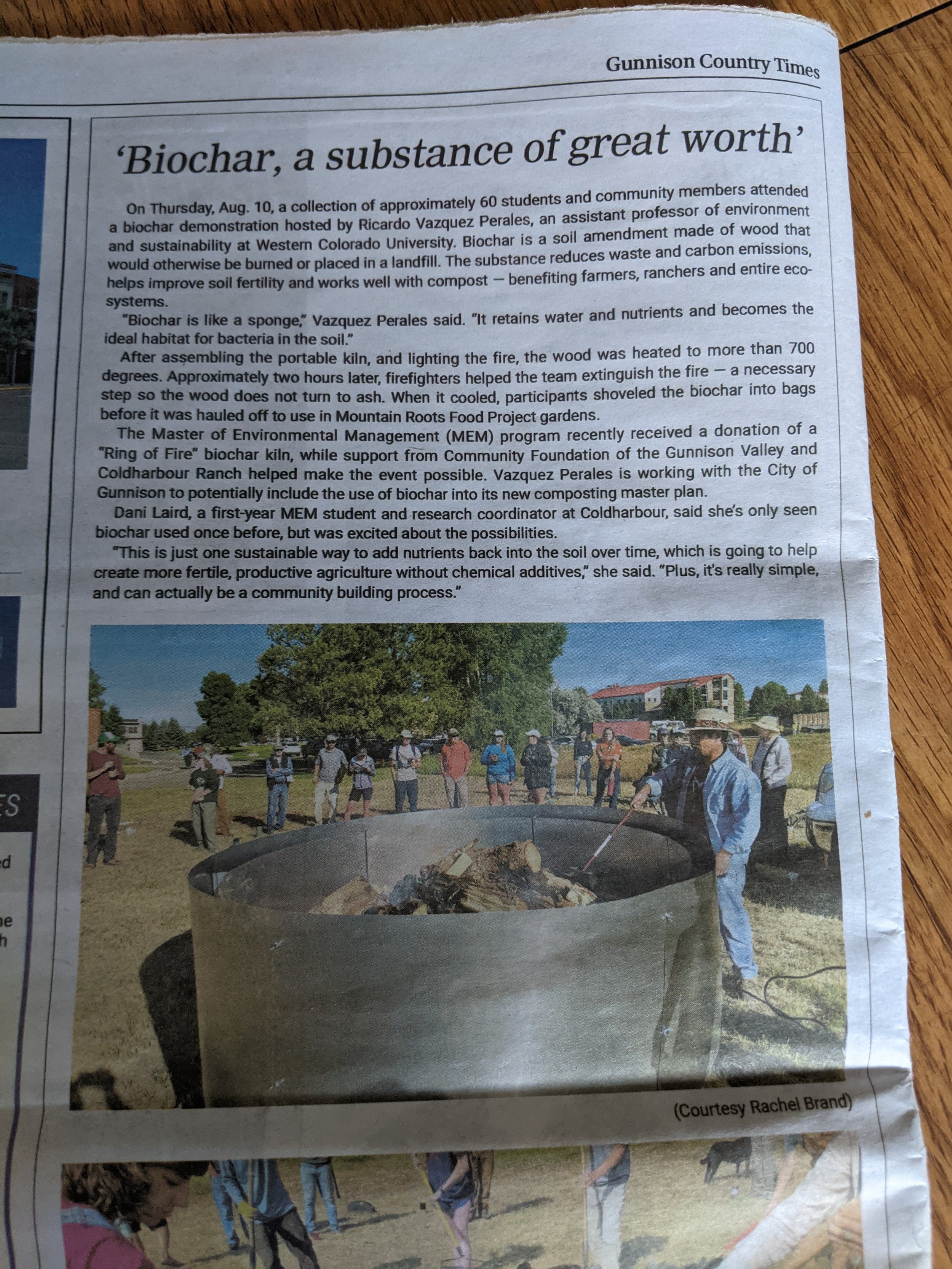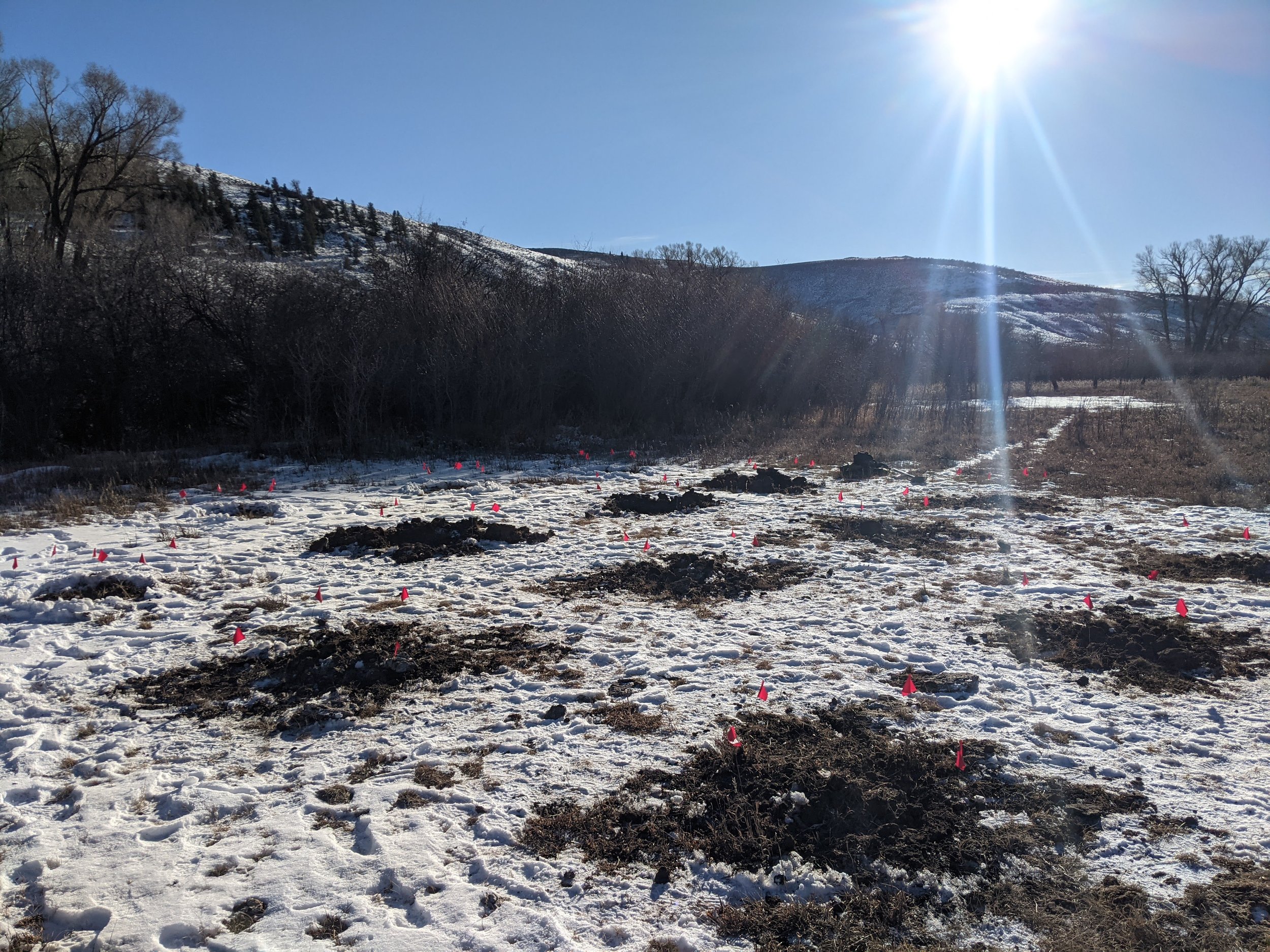BIOCHAR! SOIL!
BIOCHAR! SOIL!
My master’s thesis undertaken at Western Colorado University from 2021-2023 was titled “Characterizing Biochar for Use in Municipal, Agricultural, and Public-Lands Settings.” It was housed within the Coldharbour Institute, a regenerative agriculture-focused research hub that is the Colorado hub for the Savory Institute, and was closely connected with the Mountain Roots Food Project. The executive director at the time was MJ Pickett, the co-owner of a regenerative hog farm in Gunnison, Colorado, Calder Farms. One of the major regenerative ranching companies involved with Coldharbour is Parker Pastures, a nationally-renowned regenerative cattle farm, also based in Gunnison.
The deliverables for my thesis were:
A comprehensive literature review, focused on production and use of biochar
A series of community biochar production demonstrations, using flame-cap kilns, including a borrowed CO State Forest Service-funded flame-cap kiln from a member of the community who perished due to an accident involved in his own backyard-style biochar production. The sudden death took place just before the kiln was borrowed.
A ‘zine-styled user’s guide, so that the findings of the work could contribute to the development of the biochar system in Gunnison and in similar ecologies. The purpose of the ‘zine was to engage people, both in the creation of stories related to this project, as well as in the dissemination of the findings. The intention was to present the information creatively, to augment the level of seriousness traditionally associated with scientific findings. The invitation video made to enroll others in the creation of the ‘zine is on Youtube: https://www.youtube.com/watch?v=WW28JA7lmU0
A scientific field plot to test the effects of biochar on the soils in Gunnison, USDA plant hardiness zone 4a, elevation 7,700’, on previously degraded agricultural lands, currently shared use between wildlife and periodic cattle ranching in line with a USDA NRCS wetlands conservation easement. The study features 4 experimental conditions and 4 replicates, testing: no biochar, 1% biochar, 5% biochar, and 10% biochar. A replicate study was created nearby, which uses only 5% biochar, and uses a locally-produced class A biosolids compost as an additional experimental condition. It is well-known that using “raw” biochar in soil is less preferable than using “charged” biochar, made by mixing with a biologically-active solution such as compost. The decision for the initial field plot to forgo compost was based on two points:
for scientific simplicity, what are the effects of using raw biochar over 3 years?, and
that using the local Class A biosolids compost potentially introduces unregulated chemicals into the soils. Note that this precautionary approach was forgone in the second round of field plots undertaken after my tenure at Western had ended. The question around toxicity of class A biosolids is a nation-wide problem that is potentially at emergency scale.
With my project partner Jad, an international student from Lebanon, we established a soils lab program so that the effects of our biochar studies could be evaluated in-house, for the benefit of the academic program and to build capacity locally in Gunnison for soils experiments moving forward.
A list of recommendations for further study and development in the Gunnison Valley area, as well as in similar ecologies. A connection was established with the wastewater treatment plant to evaluate including biochar in their Class A Biosolids Compost mix in the next iteration of their wastewater treatment plant.
If you would like access to the ‘zine, literature review, or to ask any questions about biochar in general, or how the research is continuing in Colorado, please don’t hesitate to reach out.
Some pages of the zine are shared below:

















